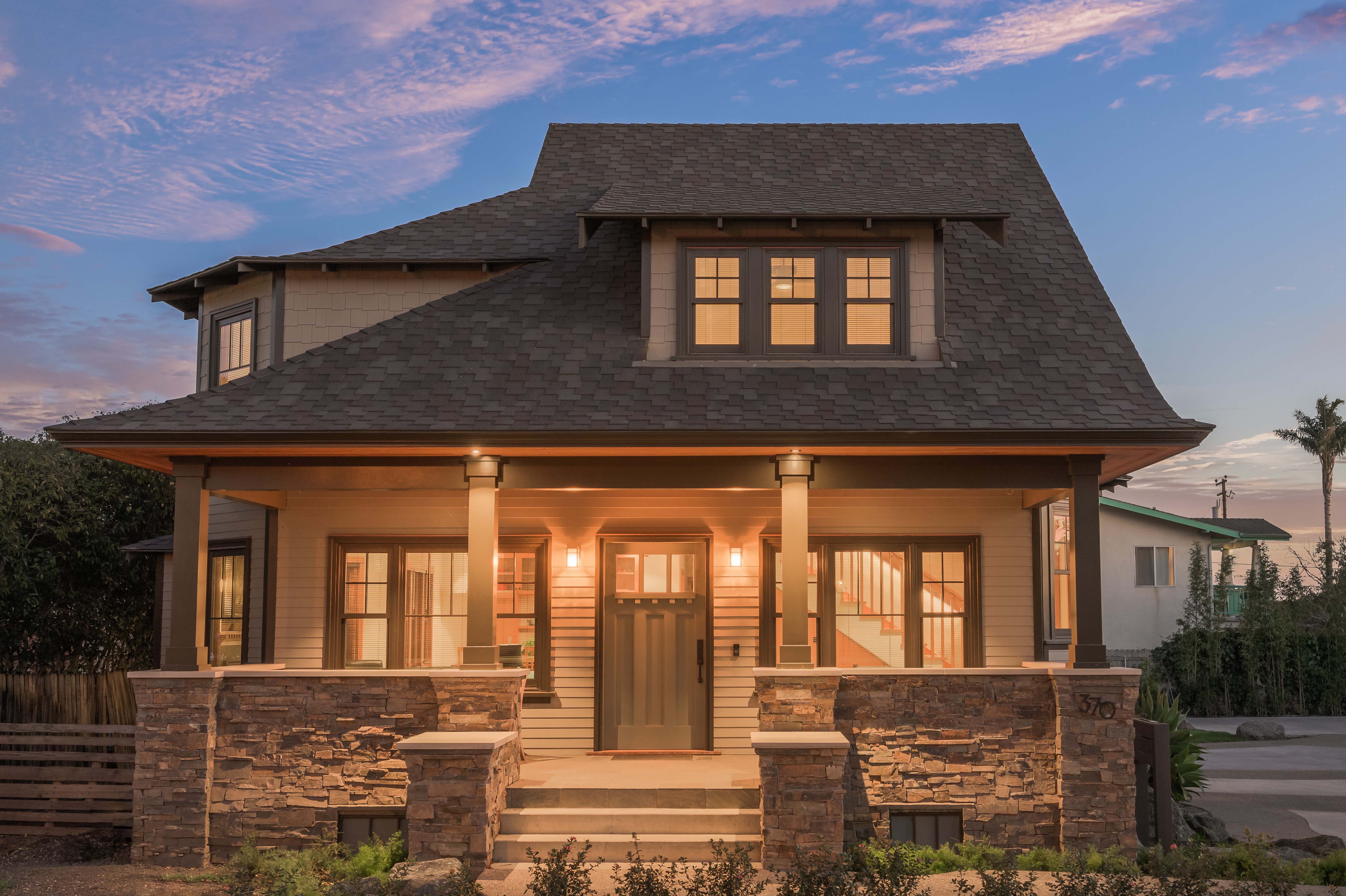
The need for and the correct use of web stiffeners with TJI® joists is a common question. A web stiffener may be required to provide one or more functions. When properly installed, web stiffeners increase joist reaction capacity by diverting a portion of the reaction load away from the web-flange joint and into the flange. This is accomplished via the direct contact between the bottom of the web stiffener and the top of the flange. Web stiffeners also help prevent the web from buckling, and provide lateral stability in certain hanger configurations. Increased reaction capacities can be found in our International Code Council® ES Evaluation Report ESR-1153, table 3(excerpt below).
The increased allowable reaction of a TJI joist with web stiffeners assumes (3) nails as shown in detail “W” (figure to left). In some cases higher allowable reactions can be achieved using more nails. Contact your local Trus Joist representative for assistance with higher reaction capacity needs.
Web stiffeners can be OSB, plywood or 2x material, depending on the thickness needed to flush the web stiffener to the edge of the TJI flange. The “W” detail calls for a gap between the top of the web stiffener and the underside of the top flange. If a gap is not created and the web stiffener is installed tight against the top and bottom flanges, it may cause damage to the web-to-flange joint during installation or when the joist begins to deflect.
Due to the gap, the web stiffener does not function as a means to transfer load from above “around” the joist. For applications where greater vertical load transfer is needed, rim board, squash blocks and blocking panels are acceptable methods to transfer load from above, around the joist, to the bearing below.
When Are Web Stiffeners Required?
The majority of TJI joist framed floors, with standard floor loading of 40 PSF Live Load and 10 PSF Dead Load, do not generally exceed the allowable reaction of a TJI joist without web stiffeners. However, scenarios with high member reactions, such as long spans with concrete topping or high live loads found in commercial or public space applications, may require web stiffeners. Trus Joist literature and software can be used to help designers and builders determine if web stiffeners are required. When referring to our standard details or placement plans, you may see a “W” added to the end of the detail callout (i.e. B1W, figure to the right). When found on a placement plan, it signifies that web stiffeners are required at that location as part of the detail. The “W” is triggered automatically in software when the allowable joist reaction (without web stiffeners) is exceeded and additional reaction capacity is needed.
A list of proper applications and requirements for web stiffeners can be found in the TJI® 110, 210, 230, 360, and 560 Specifiers Guide (TJ-4000) or the Trus Joist® Framer’s Pocket Guide. These requirements are as follows:
• A TJI joist reaction exceeds the “no web stiffener” published design value found in ESR-1153. (The detail call-out will be followed by a “W”)
• An intermediate bearing length is less than 5-1/4” and the span on either side of the bearing exceeds a given length. See footnote 1 below the TJI joist span tables on page 4 of TJ-4000 for more information.
• Where sides of the supporting hanger do not extend to laterally support at least 3/8? of the TJI joist top flange.
• Low end birds-mouth cuts in roof joist applications.
• When required by hanger manufacturer for sloped hangers.
• At all bearings for 22? and 24? deep TJI® 560D joists.
TJI® Joist Reactions and Web Stiffeners in Forte® Software
Forte®, our single member sizing software, analyzes a joist’s reaction based on the allowable reaction capacity and the available bearing length input by the user. Forte will apply web stiffeners if any of the above mentioned scenarios occur in the member you are sizing.
When looking at the final member report, if web stiffeners are required, they will be shown on the graphic at the top of the calculation and in the “Supports” summary box under “Accessories”. See figures 1 and 2 below.
If a web stiffener is required at a hanger, the Connector box will include it as an accessory.
How to turn on Web Stiffeners in Forte
To allow Forte to consider a TJI joist with web stiffeners, the “Allow TJI Web Stiffeners” setting must be turned ON in the General Settings page. In the Job Tree, select the parent entity at the top of the list (this will either say “Job”, if the file has not been saved, or it will show the file name you have given it). Once selected, three tabs will appear at the bottom of the screen. Select “Job Settings”. Under the General Settings, click on the box for “Allow TJI Web Stiffeners at End Supports” and “Allow TJI Web Stiffeners at Intermediate Supports”. Click “Save as Default”.
In summary, web stiffeners are not a means for vertical load transfer at the end of a TJI joist, but rather increase the allowable reaction of a TJI joist or provide necessary stability. Please review your structural details pages and/or the construction or placement plans to insure that end bearing details reflect the proper use of web stiffeners. Refer to TJI® 110, 210, 230, 360, and 560 Specifiers Guide (TJ-4000) or the Trus Joist® Framer’s Pocket Guide for installation details.


